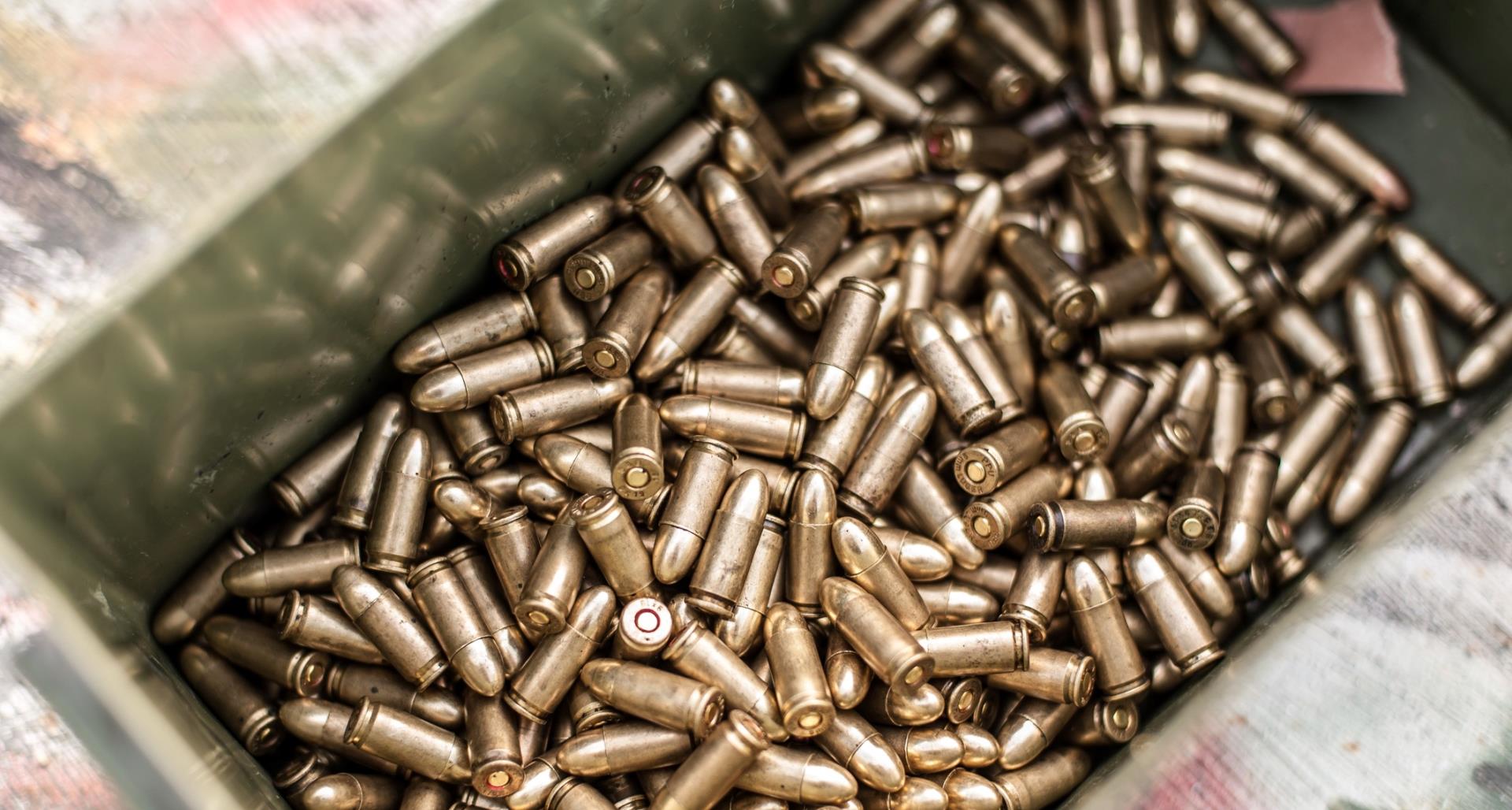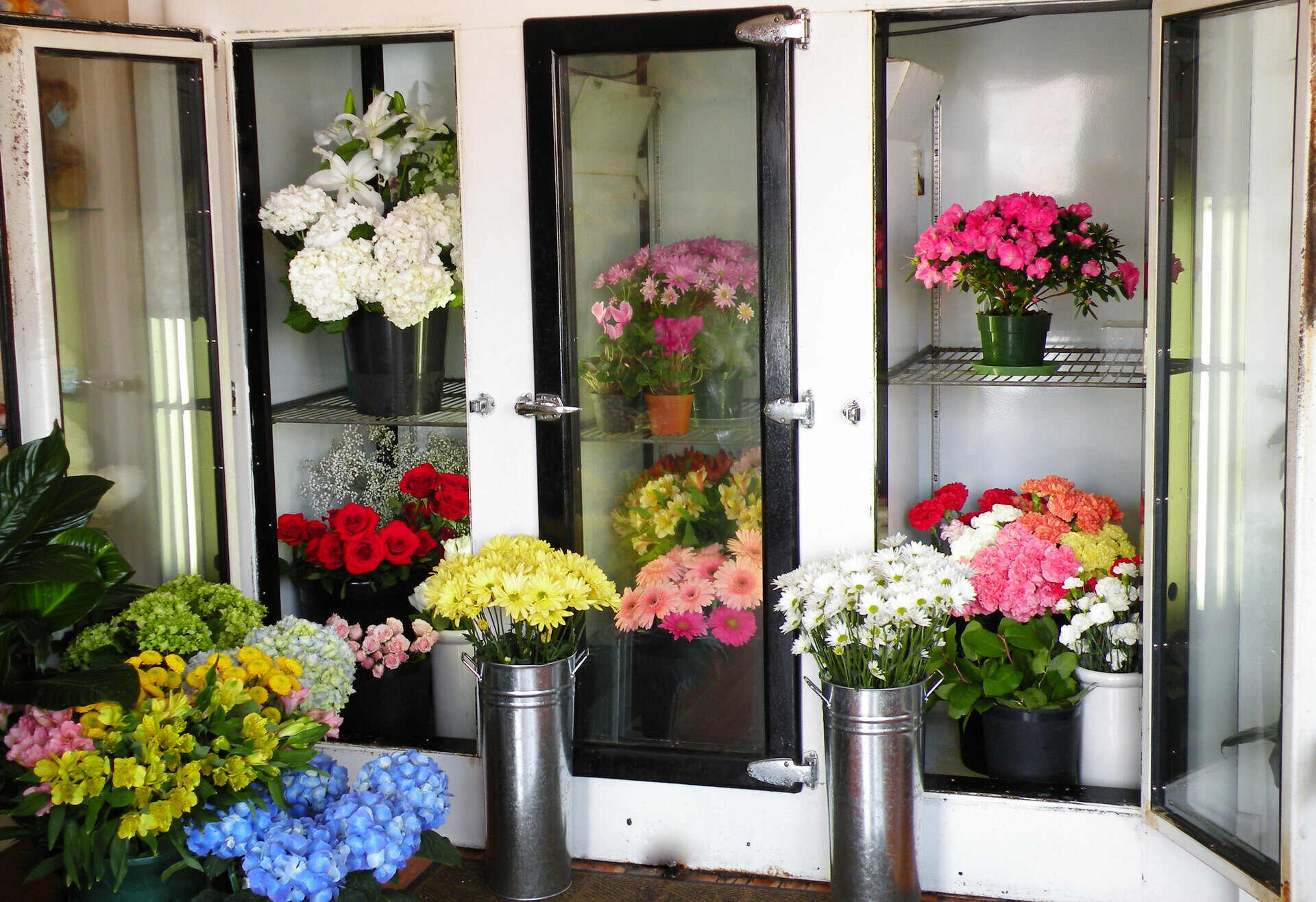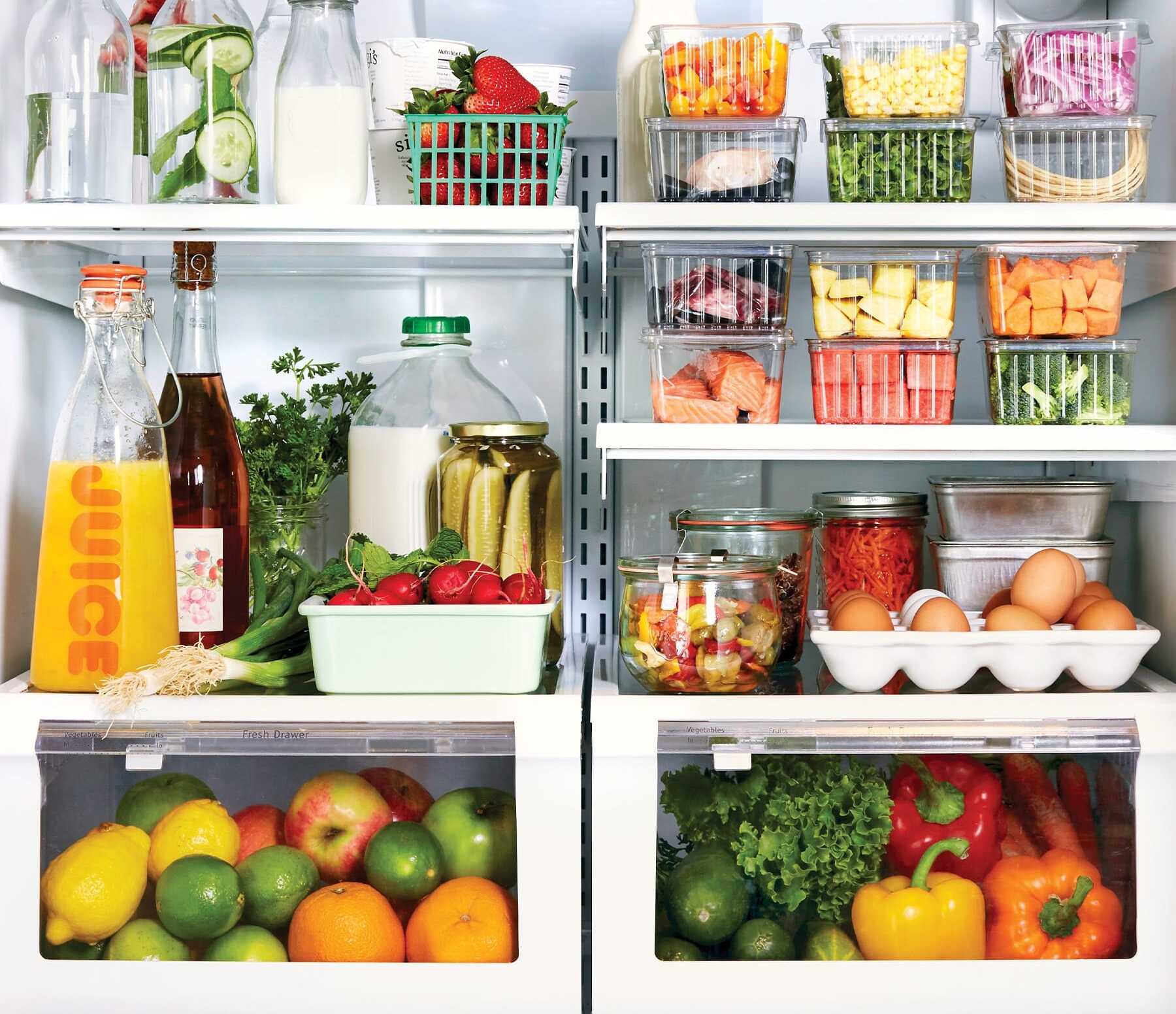

Articles
How To Store Ammo For Long Time
Modified: January 19, 2024
Learn helpful articles on how to properly store ammunition for an extended period. Discover tips and techniques to preserve ammunition quality and longevity.
(Many of the links in this article redirect to a specific reviewed product. Your purchase of these products through affiliate links helps to generate commission for Storables.com, at no extra cost. Learn more)
Introduction
Welcome to the world of ammunition storage! Whether you are a gun enthusiast, a hunter, or just someone who wants to keep their ammunition in top condition, knowing how to properly store ammo for a long time is essential. Ammunition is a valuable resource and, if not stored correctly, can degrade in quality, leading to potential failures and safety hazards.
Proper storage of ammunition not only ensures its longevity but also guarantees consistent performance when you need it the most. In this article, we will explore the importance of proper ammunition storage and provide you with essential tips for maintaining the quality of your ammunition.
So, let’s dive in and discover how to store ammo for the long haul!
Key Takeaways:
- Proper ammunition storage is crucial for reliability, safety, and longevity. Choose the right environment, control temperature and humidity, select suitable containers, and implement safety measures to ensure your ammunition remains in optimal condition.
- Organize, label, and regularly check your ammunition to maintain reliability and safety. By following these guidelines, you can ensure your ammunition is ready and reliable whenever you need it.
Read more: How To Store Ammo Long Term
Importance of Proper Ammunition Storage
Proper ammunition storage is crucial for several reasons. Firstly, it helps ensure the reliability and effectiveness of your ammunition. When stored correctly, ammo retains its integrity, meaning you can rely on it to perform as intended when you need it most.
Secondly, proper storage prevents degradation. Ammunition is susceptible to environmental factors such as moisture, extreme temperatures, and sunlight. Exposure to these elements can lead to corrosion, rust, and deterioration of the propellant inside the cartridge. This can result in misfires, reduced accuracy, and even catastrophic failures when fired.
Furthermore, storing ammunition safely is essential for preventing accidents and ensuring the well-being of everyone around. Ammo should be inaccessible to unauthorized individuals, especially children, to avoid any potential mishaps. Additionally, storing ammunition securely minimizes the risk of theft or misuse.
Lastly, correct storage practices save you money in the long run. By taking the necessary steps to store your ammo properly, you can avoid having to replace degraded or damaged cartridges. This allows you to make the most of your investment and ensures that your ammunition remains effective for extended periods.
Overall, proper ammunition storage is vital for preserving reliability, preventing degradation, ensuring safety, and maximizing your investment. Now, let’s explore how to choose the right environment for storing your ammunition.
Choosing the Right Environment
The environment in which you store your ammunition plays a critical role in maintaining its quality and longevity. Here are some key factors to consider when selecting the ideal storage location:
- Temperature: Ammunition should be stored in a cool and stable temperature environment. Fluctuating temperatures can cause expansion and contraction, which may damage the cartridge casing and affect the propellant. Aim for a temperature range of 55 to 70 degrees Fahrenheit (13 to 21 degrees Celsius) for optimal storage conditions.
- Humidity: Moisture is the enemy of ammunition. High humidity levels can lead to corrosion and degrade the performance of your ammo. Therefore, choose a storage location with low humidity, ideally below 50%. Consider using dehumidifiers or desiccant packs to absorb excess moisture in the storage area.
- Sunlight: Exposure to direct sunlight can cause heat buildup and lead to changes in temperature. It is best to store ammunition away from any windows or areas that receive direct sunlight. UV rays from sunlight can also degrade the quality of the cartridge’s components over time.
- Ventilation: Adequate ventilation is essential to prevent the buildup of gases that could affect the ammunition. Ensure that the storage area has good airflow to minimize the risk of any potentially harmful gases accumulating.
- Security: Choose a storage location that is secure and inaccessible to unauthorized individuals. It is important to store ammunition in a locked container or gun safe to prevent accidents and theft. Make sure the storage area is well-protected and that only responsible individuals have access to it.
By considering these factors and choosing an environment that meets these criteria, you can greatly increase the lifespan and reliability of your ammunition. However, environmental factors are not the only considerations when it comes to proper ammunition storage. Let’s now discuss how to control temperature and humidity effectively.
Controlling Temperature and Humidity
Controlling the temperature and humidity of your ammunition storage environment is essential for maintaining its quality. Here are some effective tips to help you control these factors:
- Temperature Regulation: As mentioned earlier, it is crucial to store ammo in a cool and stable temperature range. Consider using a dedicated temperature-controlled storage area, such as a climate-controlled room or a gun safe with built-in temperature regulation capabilities. These options provide a controlled environment and help mitigate any temperature fluctuations.
- Humidity Control: To maintain low humidity levels, use dehumidifiers or desiccant packs in your storage area. Dehumidifiers work by removing excess moisture from the air, while desiccant packs absorb moisture. Place them strategically in your storage space to ensure proper humidity control. Remember to replace or recharge desiccant packs as needed.
- Sealable Containers: Store your ammunition in sealed containers to minimize exposure to external humidity. Invest in high-quality, airtight containers such as ammo cans, which provide an extra layer of protection against moisture. Ensure that the containers are properly sealed to prevent any air or moisture from entering.
- Silica Gel Packs: Consider adding silica gel packs to your ammunition containers. Silica gel is a desiccant that absorbs moisture and helps maintain a dry environment. It is available in various sizes and is often used for moisture control in storage spaces.
- Regular Monitoring: It’s important to regularly check the temperature and humidity levels in your storage area. Use a hygrometer to measure the humidity and a thermometer to monitor the temperature. This way, you can ensure that the conditions remain within the desired range and make adjustments if necessary.
By implementing these strategies and maintaining proper temperature and humidity control, you can prolong the life and performance of your ammunition. In the next section, we will discuss the importance of selecting appropriate containers for ammunition storage.
Selecting the Appropriate Containers
Choosing the right containers for your ammunition storage is crucial in ensuring its protection and longevity. Here are some factors to consider when selecting the appropriate containers:
- Ammo Cans: Ammo cans are a popular choice for storing ammunition due to their durability and airtight seal. These metal or plastic containers provide excellent protection against moisture, dust, and physical damage. Look for cans that are corrosion-resistant and have a rubber gasket seal to maintain airtightness.
- Plastic Boxes: Plastic storage boxes with tight-fitting lids are another option for ammunition storage. Look for boxes made of high-quality, non-reactive materials such as polypropylene. Ensure the boxes are sturdy enough to prevent crushing or damage to the cartridges.
- Original Packaging: If you have ammunition that is still in its original factory packaging, it is generally safe to keep it in its original form. Manufacturers design the packaging to provide protection against environmental factors. However, it is still important to store the original packaging in a cool, dry place to maintain its integrity.
- Labels: Regardless of the container you choose, it is essential to label it properly. Clearly mark the contents of the container, including the caliber, type of ammunition, and date of purchase. This helps you easily identify and retrieve the desired ammunition without unnecessary handling or exposure to the elements.
- Storage Separation: Consider separating different types of ammunition or calibers to prevent confusion and ensure easy access. You can use dividers or separate containers for each type to maintain organization and prevent mix-ups.
Remember, the goal of selecting appropriate containers is to protect your ammunition from moisture, physical damage, and potential contamination. By investing in high-quality and suitable storage containers, you can safeguard the integrity and performance of your ammunition for years to come.
Now that we have discussed the importance of choosing the right containers, let’s move on to the next step: organizing and labeling your ammunition storage area.
Store ammo in a cool, dry place away from moisture and extreme temperatures. Use airtight containers or ammo cans to prevent corrosion and degradation. Rotate stock regularly to ensure freshness.
Read more: How To Store Eggs For A Long Time
Organizing and Labeling
Proper organization and labeling of your ammunition storage area are crucial for easy access and maintenance. Here are some helpful tips for organizing and labeling your ammunition:
- Categorize by Type: Organize your ammunition by type, such as rifle rounds, handgun rounds, or shotgun shells. This makes it easier to find the right ammunition for each firearm.
- Separate by Caliber: Within each category, further separate your ammunition by caliber. This ensures that you can quickly identify the appropriate cartridges for each firearm.
- Use Clear Containers: Consider using clear containers or containers with transparent lids so that you can easily see the contents without having to open them. This allows for quick identification and reduces unnecessary handling.
- Labeling: Label each container with the relevant information, including the caliber, type of ammunition, and quantity. This helps you quickly locate the desired ammunition and eliminates any confusion or mix-ups.
- Shelf or Rack System: Utilize shelving or racks to store your containers. This allows you to maximize space and keep your ammunition organized and easily accessible.
- Rotation System: Implement a rotation system by placing newer ammunition at the back of the storage area and older stock towards the front. This ensures that you use the oldest ammunition first, preventing it from sitting unused for extended periods.
By organizing and labeling your ammunition storage area, you can save time and effort in locating the right ammunition and maintain a well-maintained inventory. This also reduces the chances of accidental mix-ups or using expired ammunition.
Now that we have covered organization and labeling, it’s time to discuss implementing safety measures to ensure the well-being of everyone around.
Implementing Safety Measures
When it comes to storing ammunition, safety should be a top priority. Here are some essential safety measures to implement in your ammunition storage area:
- Secure Storage: Ensure that your ammunition is stored securely and inaccessible to unauthorized individuals, especially children. Use lockable cabinets, gun safes, or other secure storage options to prevent accidents and potential misuse.
- Separation from Firearms: It is advisable to store your ammunition separately from firearms. This reduces the risk of unintentional loading and handling of firearms while organizing or retrieving ammunition.
- Avoid Extreme Conditions: Do not expose your ammunition storage area to extreme conditions, such as excessive heat or open flames. Avoid storing ammunition near flammable materials or in areas prone to fire hazards.
- Proper Ventilation: Ensure that your storage area has proper ventilation to prevent the buildup of gases. This is especially important if you are storing large quantities of ammunition. Good airflow helps dissipate any potentially harmful gases that may result from the degradation of propellant.
- Fire Prevention: Take necessary precautions to prevent fires in your ammunition storage area. Install smoke detectors and fire extinguishers nearby, and regularly inspect them to ensure they are in proper working condition.
- Education and Training: Ensure that anyone who has access to the ammunition storage area understands basic safety protocols and safe handling practices. Educate yourself and others on proper ammunition storage, handling, and disposal to minimize the risk of accidents.
By implementing these safety measures, you can create a secure and responsible environment for storing ammunition. These precautions not only protect you and your loved ones but also contribute to the overall safety of your home or facility.
Now that we have covered safety measures, let’s move on to the importance of regularly checking your ammunition for any signs of degradation or damage.
Checking Ammunition Regularly
Regularly inspecting your ammunition is an important step in ensuring its reliability and safety. Here are some guidelines for checking your ammunition on a regular basis:
- Visual Inspection: Carefully examine each cartridge for any signs of damage or corrosion. Check for dents, scratches, bulges, or discoloration on the casing. If you notice any abnormalities, it is best to err on the side of caution and discard the affected rounds.
- Check the Primers: Inspect the primers of your ammunition. Ensure that they are properly seated and free from any indentations or deformities. A primer that appears loose or has a punctured or flattened appearance should be considered unsafe to use.
- Look for Powder Leakage: Check for any signs of powder leakage or residue around the cartridge. If you notice powder residue or granules outside of the casing, it might indicate a problem with the integrity of the round. Such ammunition should not be fired and should be disposed of properly.
- Sensitive Handling: Handle your ammunition with care during the inspection process. Avoid excessive dropping, rough handling, or subjecting it to unnecessary force. Accidental impacts can potentially cause damage to the propellant inside the cartridge.
- Storage Conditions: Ensure that your storage area continues to meet the recommended temperature and humidity levels. Monitor the conditions regularly and make any necessary adjustments to mitigate any potential degradation risks.
- Document and Discard: Keep a record of the date of purchase or storage for each batch of ammunition. This allows you to track the lifespan and usage of your ammunition. If you come across any rounds that have been stored for an extended period, consider using them for practice or disposing of them appropriately.
Regularly checking your ammunition ensures that you can identify any potential issues before they become hazardous. It’s better to be safe than sorry when it comes to the reliability and performance of your ammunition.
By following these guidelines and conducting regular inspections, you can maintain a reliable stock of ammunition and ensure your safety when using it. Now, let’s conclude our discussion on how to store ammo for the long term.
Conclusion
Proper ammunition storage is essential for maintaining the integrity, reliability, and safety of your ammunition. By implementing the practices outlined in this article, you can ensure that your ammunition remains in optimal condition for an extended period.
Choosing the right environment, controlling temperature and humidity, selecting appropriate containers, organizing and labeling your storage area, implementing safety measures, and regularly checking your ammunition are all key steps in effective ammunition storage.
Remember to store your ammunition in a cool and stable environment, controlling both temperature and humidity levels. Choose airtight containers such as ammo cans or plastic boxes to protect against moisture and physical damage. Label your containers for easy identification and separate your ammunition by type and caliber to maintain organization.
Implementing safety measures, such as secure storage and proper ventilation, ensures the well-being of everyone around and minimizes the risk of accidents. Regularly inspect your ammunition for any signs of damage or degradation and handle it with care during the process.
By following these guidelines, you can maximize the lifespan, reliability, and performance of your ammunition. Whether you are a gun enthusiast, hunter, or simply a responsible firearm owner, proper ammunition storage should be a priority.
So, the next time you store your ammunition, remember the importance of a suitable environment, temperature and humidity control, proper containers, organization and labeling, safety measures, and regular checks. By taking these steps, you can ensure that your ammunition is ready and reliable whenever you need it.
Stay safe, responsible, and enjoy the peace of mind that comes with knowing your ammunition is stored correctly for the long haul!
Frequently Asked Questions about How To Store Ammo For Long Time
Was this page helpful?
At Storables.com, we guarantee accurate and reliable information. Our content, validated by Expert Board Contributors, is crafted following stringent Editorial Policies. We're committed to providing you with well-researched, expert-backed insights for all your informational needs.















0 thoughts on “How To Store Ammo For Long Time”